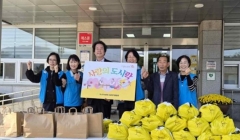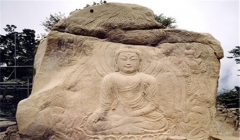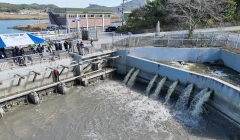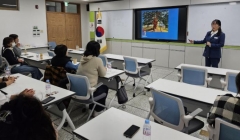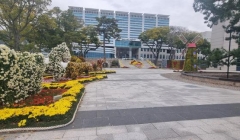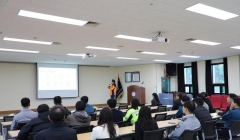편집 : haenamnews@naver.com
열대벼(인디카)의 한국 도입과 해남 시험재배 현황
전통적으로 자포니카 쌀이 주류인 국내에서, 열대·아열대 기후에 적합한 인디카 벼(장립종 쌀)는 재배가 어렵다는 인식이 있었으나, 기후변화로 상황이 변화하고 있다. <농민닷컴. 경향신문>
특히 전남 해남군은 아열대화의 ‘관문’ 지역으로 평가되며, 전국에서 유일하게 장립종(인디카) 벼를 재배하고 있다.
영산강 간척지에 약 26헥타르 규모의 시범 단지가 조성되어 집중호우나 폭염 등 이상기후에 강한 특성에 주목하고 있습니다. <경향신문>
.땅끝황토친환경영농조합법인은 2025년 5월 말~6월 초에 약 400여 품종의 인디카 벼에 대한 모내기를 실시하는 등 본격적인 시험재배를 진행했다. <한우리. H뉴스>
또 농진청은 ‘장립종 벼 기반 쌀산업 혁신 프로젝트’를 올해부터 5년간 추진 중이며, 민·관·학·연 협업을 통해 한국형 인디카 품종 육성에 나서고 있다. <농민닷컴>
일본의 쌀값 폭등과 벼 재배면적 감소 흐름
일본은 1970년대 이후 감산 정책(減反政策)을 통해 벼 재배면적을 크게 줄여왔습니다. 1969년 약 317만 ha였던 재배 면적은 2023년 약 124만 ha로 축소되었다. <동아일보. yonhapmidas.com>
감산 정책은 쌀 생산량도 1967년 약 1,309만 톤에서 현저히 감소시켰고, 이는 공급 기반 약화를 초래했다. <동아일보. yonhapmidas.com>
2023년 이상고온과 태풍 등 기상이변이 빈발하며 수확량은 저조했으며, 2024년 초 사상 최고치에 달하는 급등한 쌀값은 ‘레와(令和) 쌀 소동’이라 불릴 만큼 큰 사회적 충격을 준 사건이었다.
예컨대 2025년 3월 첫째 주 5kg당 평균 쌀 가격은 전년 대비 약 99.3% 상승한 4,077엔에 달했다. <한국무역협회. 동아일보>
일본 정부는 비축미 방출과 수입 가능성을 시사하면서도, 투기 세력에 의한 사재기와 집하량 급감 등 구조적 문제로 인해 쌀값 안정에는 한계가 있었다. <한국무역협회. 동아일보. 전기신문>
전문가들은 쌀 감산 정책을 중단하고 생산 기반을 강화하며, 남는 쌀은 수출하는 유연한 정책 전환이 필요하다고 지적하고 있다. <동아일보. Nate News. yonhapmidas.com>
한국의 남는 농지 활용, 고품질 쌀 생산 유지 가능성
해남지역의 인디카 벼 시범재배는 농지를 효율적으로 활용하면서 기후변화에 대응하는 방안으로 주목된다.
인디카 벼는 기존 자포니카와는 다른 요리 형태(볶음밥·카레·국수 등)에 적합하며, 이주민 증가와 외식문화 변화 등으로 국내 수요도 점차 늘어나는 추세다. <농민닷컴, 경향신문. Brunch Story>
농진청의 범국가적 프로젝트는 인디카를 국내외 시장을 겨냥한 새로운 수출 효자 품목으로 육성할 가능성을 열어준다. <농민닷컴>
미래 대응 전략: 내국인 입맛 변화와 농민 반응
한국인 주식문화는 여전히 자포니카 중심이지만, 최근 ‘저탄고단’ 식문화 확산과 간편식·혼밥 트렌드로 인해 푸슬푸슬한 인디카 쌀이 부응할 기회가 있다.
농민들은 새로운 수요에 맞춰 품종 전환을 고려할 수 있으며, 농업 효율성과 시장 다변화 차원에서도 긍정적 흐름으로 볼 수 있습니다.
다만 품종 개량·수확량 확보·가공 적응 등 현실적 과제들이 있어 농민들의 적극적인 참여와 정책 지원이 병행되어야 한다.
쌀 수출 및 가공 밥 수출 가능성
일본 쌀값 급등 사태는 한국산 쌀, 특히 고품질 국산 품종에 대한 해외 관심을 환기하는 계기가 되었다. <한국무역협회, 동아일보>
인디카 쌀은 전 세계 쌀 유통량의 약 90%를 차지하는 주요 품종으로, 국산 인디카를 수출용 가공식품이나 해외 소비자 중점 상품으로 활용할 잠재력이 크다. <농민닷컴. 경향신문. 한우리. Brunch Story>
가공 밥, 레토르트 식품 등 다양한 형태로 수출할 경우, 농가 소득 증대와 쌀 과잉 문제 해소에 일조할 수 있다.
결론적으로 한국 농업은 기후변화와 소비문화 변화를 기회로 삼아, 전통적인 벼 생산 구도를 재설계할 때입니다. 해남의 인디카 시험재배는 그 상징이며, 정부의 중장기 연구·육성 프로젝트와 농민·산업계의 참여가 합쳐진다면, 고품질 쌀 생산 유지와 수출 기반 마련이 충분히 현실이 될 수 있다고 본다.
일본의 실패 사례와 한국의 기술적 기반을 교훈 삼아, 농지를 단순히 감산 대상으로 보지 않고, 변화를 선도할 산업적 자산으로 전환해야 할 시점이지 않을까
❙ Editorial ❙
Editor: haenamnews@naver.com
Where Should Haenam’s Rice Farming Go?
Introduction of Tropical Rice (Indica) into Korea and the Trial Cultivation in Haenam
Traditionally, Japonica rice has dominated the domestic market. Indica rice (long-grain), which grows well in tropical and subtropical climates, was long considered unsuitable for cultivation in Korea. However, climate change is altering that perception.
In particular, Haenam County in South Jeolla Province—often described as the “gateway” to Korea’s subtropical transition—is the only region nationwide cultivating Indica rice.
A pilot complex of about 26 hectares has been established in the Yeongsangang reclaimed land, drawing attention for Indica’s resilience against extreme weather such as heavy rainfall and heat waves.
The Ttangkkeut Hwangto Organic Farming Cooperative carried out full-scale trial cultivation in late May to early June 2025, planting around 400 varieties of Indica rice.
Meanwhile, the Rural Development Administration has launched a five-year “Long-grain Rice Industry Innovation Project” beginning this year, aiming to breed Korean-style Indica varieties through collaboration across government, academia, research, and industry.
Japan’s Soaring Rice Prices and Decline in Cultivation
Since the 1970s, Japan has steadily reduced its rice cultivation area under the “gentan” (acreage reduction) policy. The cultivation area, once about 3.17 million hectares in 1969, had shrunk to around 1.24 million hectares by 2023.
This policy also slashed rice production—from 13.09 million tons in 1967 to far lower levels—undermining the supply base.
With abnormal weather in 2023, including high heat and typhoons, harvests plummeted. In early 2024, rice prices surged to record highs, sparking the so-called “Reiwa Rice Panic” that shook Japanese society.
For example, in the first week of March 2025, the average price of rice per 5 kg rose to 4,077 yen—an increase of about 99.3% year-on-year.
Although the Japanese government attempted to stabilize the market by releasing reserves and hinting at imports, speculative hoarding and supply shortages exposed the structural flaws of its policies.
Experts argue that Japan must end its acreage reduction program, rebuild its production base, and adopt flexible policies such as boosting exports for surplus rice.
Utilizing Idle Farmland in Korea and the Prospects for High-quality Rice Production
The Indica pilot cultivation in Haenam represents an effort to use farmland more efficiently while preparing for climate change.
Unlike Japonica, Indica rice suits dishes such as fried rice, curry, and noodles. With Korea’s growing immigrant population and changes in dining culture, domestic demand is gradually rising.
The national Indica project also opens the door for Korean-grown Indica rice to become a major export product in global markets.
Future Strategies: Changing Domestic Preferences and Farmers’ Reactions
While the Korean staple diet remains centered on Japonica rice, shifting trends—such as low-carb/high-protein diets, convenience meals, and single-person households—create new opportunities for Indica rice, which has a fluffier texture.
Farmers may consider switching varieties to meet this emerging demand, and from the standpoint of efficiency and market diversification, such a move could be positive.
Yet real challenges remain: breeding improvements, stable yields, and adaptation for processing. Thus, farmer participation must be accompanied by strong policy support.
Export Potential for Rice and Processed Products
Japan’s recent rice price surge has heightened international interest in Korean rice, particularly high-quality domestic varieties.
Globally, Indica rice accounts for about 90% of traded rice. With this in mind, Korean-grown Indica could become a strong export item, whether as processed food products or as consumer-ready rice abroad.
Exports of ready-to-eat rice, retort-packaged meals, and other processed foods could boost farm incomes while also alleviating Korea’s domestic oversupply problem.
Conclusion
Korean agriculture now faces a turning point: climate change and evolving consumer culture should be seen not as threats, but as opportunities to redesign traditional rice production. Haenam’s Indica pilot farming is emblematic of this transition. With the Rural Development Administration’s long-term initiatives and the participation of farmers and industry, maintaining high-quality rice production while building an export foundation is a realistic prospect.
Japan’s policy missteps, combined with Korea’s technological capacity, provide valuable lessons. It is time to stop viewing farmland merely as acreage to be reduced, and instead transform it into a strategic asset leading agricultural change.
해남뉴스 haenamnews@naver.com
 2025.11.14 (금) 11:30
2025.11.14 (금) 11:30













